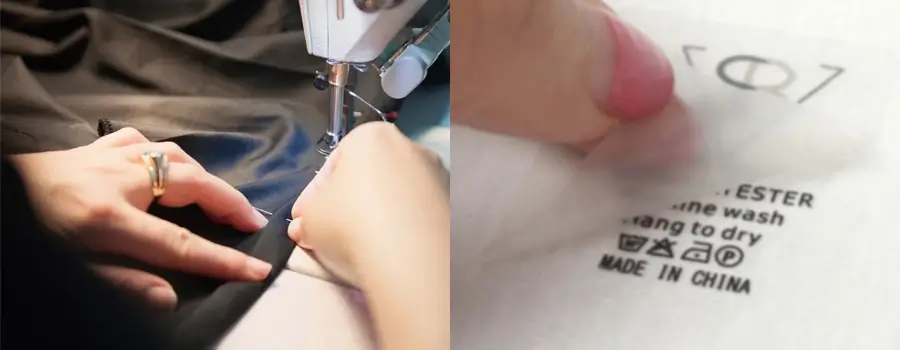In an era where smart clothing and automated inventory systems are reshaping the apparel industry, washable RFID clothing tags have emerged as a game-changing innovation. Unlike traditional RFID tags, these specialized tags are engineered to endure the harsh conditions of washing machines, dryers, and even industrial laundry cycles—all while maintaining seamless functionality for tracking, authentication, and data collection. But how exactly do they survive repeated laundering, and what makes them a must-have for modern clothing brands? In this blog, we'll dive deep into the technical specifications, integration methods, and hardware innovations behind washable RFID tags, providing actionable insights for brands looking to adopt this technology.

To ensure reliability in real-world applications, washable RFID Clothing tags must adhere to strict design and performance standards. Here's a closer look at their critical specifications:
The outer casing of washable RFID clothing tags is typically made from flexible, waterproof polymers such as TPU (thermoplastic polyurethane) or silicone. These materials not only repel water but also resist abrasion from friction during washing cycles. For instance, TPU's elasticity allows the tag to bend with fabric without cracking, making it ideal for activewear or garments requiring frequent movement.
High-temperature washing (common in industrial settings) demands tags that can withstand heat up to 60°C (140°F) and prolonged exposure to steam during ironing. Advanced encapsulation techniques, such as multi-layer lamination, prevent heat from damaging the embedded RFID chip and antenna.
To avoid discomfort for wearers, washable RFID tags are designed to be ultra-thin (0.3–1mm thickness) and lightweight. Some tags mimic the size and texture of standard clothing labels, ensuring they remain unnoticeable even in form-fitting garments like underwear or athletic wear.
Most tags comply with ISO/IEC 18000-6C (UHF) or ISO/IEC 15693 (HF) protocols, ensuring compatibility with global RFID systems. UHF tags, for example, are favored in retail logistics for their 1–5-meter read range, while HF tags are preferred for secure, short-range applications like luxury item authentication.
Leading manufacturers subject tags to 50+ simulated industrial wash cycles (following AATCC 135 guidelines) to verify durability against detergents, spin cycles, and mechanical stress.
Integrating RFID tags into garments requires a balance between durability, aesthetics, and cost-effectiveness. Below are the most widely used attachment techniques:
A classic approach involves stitching RFID tags directly into existing care labels or garment seams. This method is popular for its permanence and low risk of detachment. For example, workwear brands often use this technique to embed tags into the collar or hem, ensuring they survive years of heavy use.
Using heat-press machines, RFID tags are fused onto fabric surfaces at high temperatures. This method is ideal for lightweight fabrics like polyester or nylon, where stitching might compromise the material. Heat-transfer tags are commonly used in sportswear due to their smooth finish and resistance to peeling.
Waterproof adhesives enable tags to bond securely to fabrics without sewing. This approach is cost-effective for uniforms or disposable medical scrubs, where quick application is prioritized. However, adhesive strength must be tested against prolonged exposure to moisture and heat.
For high-end smart clothing, RFID tags are woven directly into the fabric using specialized looms. This technique, often seen in military uniforms or premium athleisure, embeds the tag between fabric layers, making it virtually undetectable and tamper-proof.
Design Tip: To maintain a sleek appearance, many luxury brands hide RFID tags within embroidered logos or decorative patches, ensuring functionality doesn't compromise style.

The resilience of washable RFID tags hinges on cutting-edge hardware design. Let's break down the key components:
The RFID chip—the "brain" of the tag—is coated with epoxy resin or a similar waterproof compound. This coating shields the microchip from water ingress, detergent chemicals, and physical impact. Some advanced tags even use hermetic sealing, a process borrowed from aerospace engineering, to create an airtight barrier around the chip.
The antenna, responsible for transmitting data, is typically made from etched aluminum or silver conductive ink. These materials maintain conductivity even after repeated bending and washing. For instance, silver ink antennas are printed directly onto flexible substrates, enabling them to stretch with the fabric without breaking.
Multi-layer encapsulation involves sandwiching the chip and antenna between protective films (e.g., PET or polyimide). This not only prevents moisture damage but also distributes mechanical stress during spin cycles, reducing the risk of cracks.
High-security applications, such as anti-counterfeiting for luxury goods, may include tamper-destructive designs. If someone attempts to remove the tag, the antenna breaks, rendering the tag unusable and alerting brands to potential fraud.
Washable RFID tags represent a fusion of textile innovation and RFID technology, offering brands unparalleled efficiency in inventory management, security, and customer engagement. By adhering to rigorous specifications, employing strategic attachment methods, and leveraging robust hardware, these tags transform ordinary garments into smart, data-driven assets.
Looking to future-proof your clothing line? [Contact our team] to explore custom washable RFID solutions tailored to your needs!
-------------------
Welcome to contact us!
RFIDSilicone is Your Best RFID & NFC Partner!
19+ years experience in RFID products (RFID wristband, RFID sticker/tag, RFID card etc).
Our own factory passed ISO9001: 2015 & ISO14001:2015. We have SGS, ROHS, REACH, FDA certificates etc.